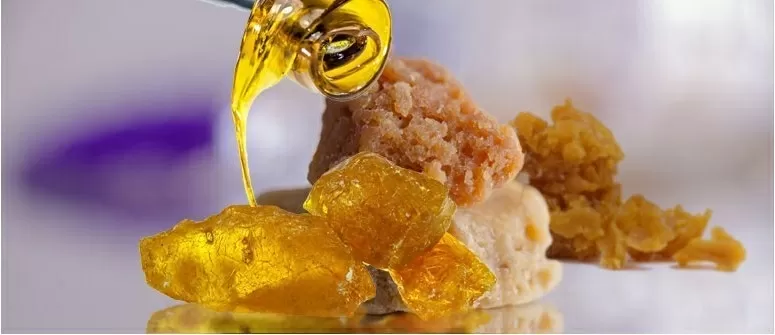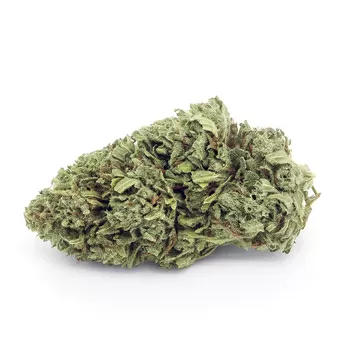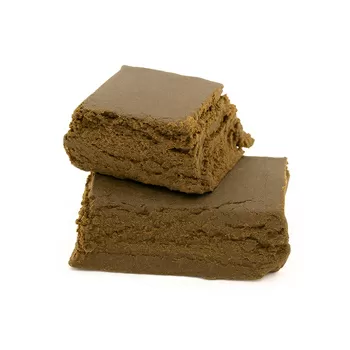Cannabis resin, also often referred to as 'sap', is the term used to describe trichomes, the 'pollen' commonly found on marijuana inflorescences and related leaves that characterise the cannabis sativa plant, extracted using a variety of methods. It is precisely the trichomes that hold the highest concentration of the active principles THC or tetracannabidiol and CBD or cannabidiol, the same ones that are responsible for the therapeutic and psychoactive efficacy for which cannabis is proverbially known.
If analysed from a purely evolutionary point of view, a genuine defence mechanism triggered by the plant and capable of helping it to stay alive during its flowering cycle: in addition to being the main source of all the cannabinoids and terpenes typical of marijuana, it helps to protect the crop from possible damage caused by ultraviolet radiation, if incorrectly dosed.
The aromatic terpenes that accompany this pollen also act as a powerful deterrent against insects, parasites and infestations of various kinds that could seriously compromise the health of the plant.
Regular recreational users of marijuana recognise cannabis resin as a valuable by-product precisely because of the large amount of cannabinoids it contains. Here, then, is a useful guide to illustrate how to extract cannabis resin and how to take it in order to best benefit from its countless effects.
What is cannabis resin and what are its effects
Cannabis resin is therefore a particular extract derived from the inflorescences produced by sativa cannabis plants while still alive, i.e. not dried, specifically from the trichomes, small pistils present on the plants which contain the highest concentration of active ingredients or cannabinoids.
In general, it appears as a dark and particularly dense, almost viscous mass, while the extraction method used to produce it is aimed at preserving the waxes and chlorophylls contained in the plant, thus maintaining the organoleptic profile of the cannabis itself.
Due to its particular consistency, cannabis resin is preferably dispensed by means of pre-filled syringes instead of the droppers generally used for CBD oil: the administration of this derivative is therefore more complex and in some respects more laborious, thus requiring some suggestions that we will illustrate below.
The effects of smoked cannabis resin are very similar to the most common effects of smoking a joint. The high THC content and legal CBD makes the derivative highly potent, especially at a psychotropic and psychoactive level, generating first and foremost a marked sensation of high and euphoria accompanied by well-being and increased energy and vitality, all counterbalanced however by the relaxing and soothing action typical of CBD.
However, only one rule always applies: cannabis resin must also be used with common sense, without giving in to excess or the desire to experience ever stronger and more amplified sensations. It is therefore better to limit the use of this extract, reserving it only for 'special occasions'!
How to take cannabis resin
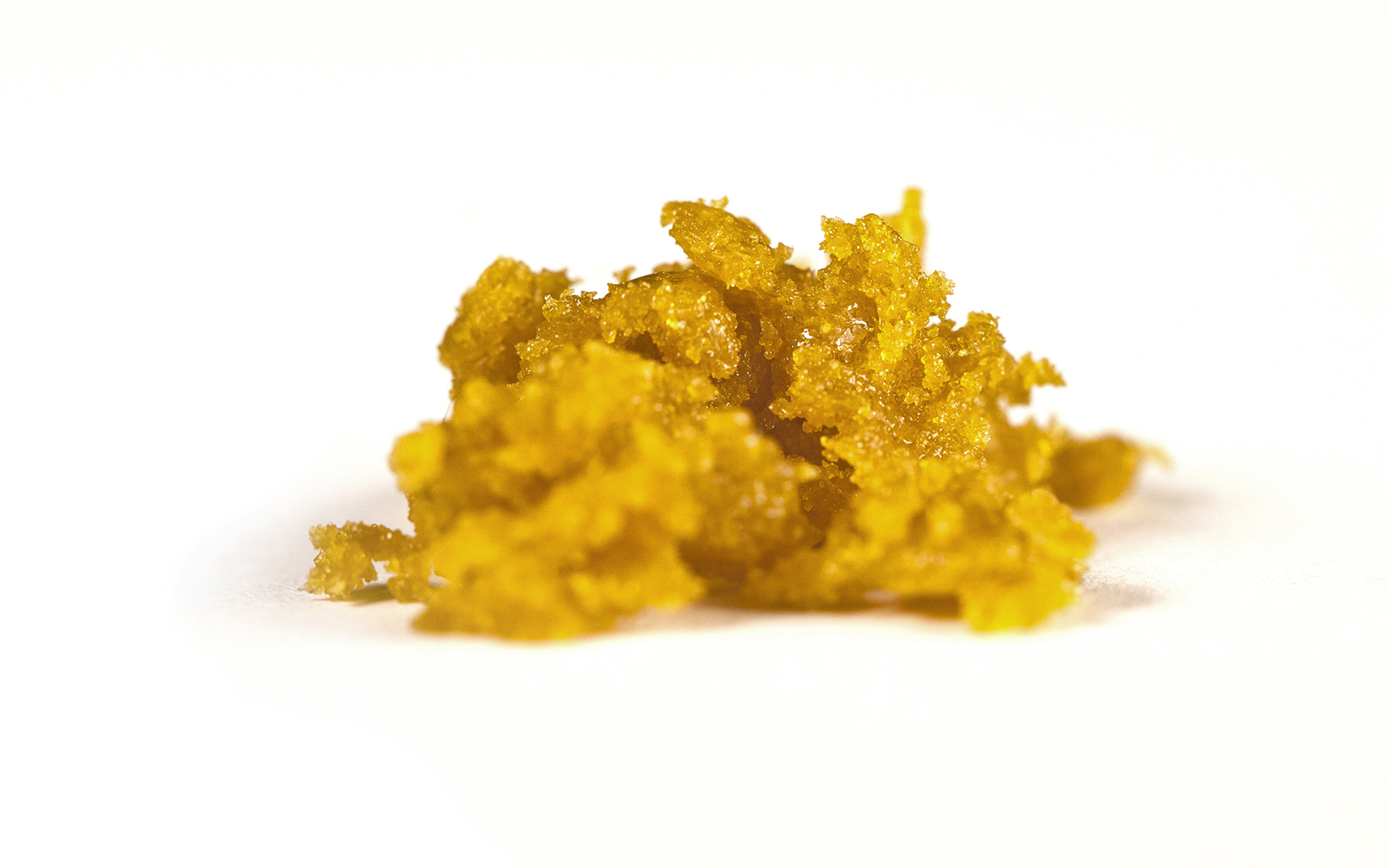
When it comes to cannabis resin, countless questions arise regarding the most appropriate methods of administration.
Many of these appear to be similar to those for CBD oil, the most popular being oral mucosal administration.
Taking cannabis resin orally provides a remarkable yield of active ingredients together with a particularly rapid and immediate effect, as there are capillaries and small veins in the sublingual area which allow direct access to the bloodstream. In this way, the cannabinoids bypass both the digestive system and the liver and reach the bloodstream almost instantaneously, allowing you to benefit from the known effects.
It is taken by applying a few drops of resin under the tongue, the equivalent of a grain of rice, and then applying gentle pressure with it without swallowing the saliva for at least ten minutes.
Cannabis resin, like CBD oil, can also be taken through coffee and beverages, whereby the active ingredients reach the liver and digestive tract and are subsequently metabolised to enter the bloodstream. However, the yield of cannabinoids such as CBD and CBN when used in this way is rather reduced and the effects tend to appear after a longer waiting period. In this case, a small amount of resin should be added to coffee or drinks, preferably hot ones, but always in moderation: cannabis drinks are always very popular!
However, this cannabis derivative lends itself to topical application to resolve problems such as dermatitis, acne, itching, psoriasis or rashes. The skin in fact has its own endocannabinoid system where receptors readily bind to applied cannabinoids.
It is therefore possible to create a true therapeutic balm with a high concentration of cannabis resin by simply adding a few drops to an ordinary body cream and then applying the preparation by massaging it into the areas to be treated locally.
In contrast to CBD oil, however, cannabis resin, due to its rather dense and viscous consistency, is not suitable for vaping in specific vaping devices as is the case with CBD e-liquids.
However, it can easily be incorporated as an ingredient in creative culinary preparations, edibles, using the many marijuana recipes available or alternatively mixed with a classic marijuana herbal tea to amplify its effects.
Although the release of active ingredients is considerably slower in these ways, it is still possible to enjoy the same benefits as with conventional cannabis consumption through smoking or vaping.
How resin is extracted from cannabis
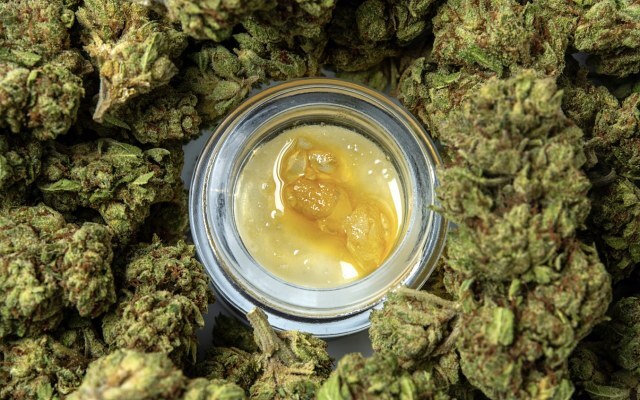
Several extraction methods are used to obtain cannabis resin, the most common of which is undoubtedly the so-called ‘rosin’, a resin in solid form obtained through pressure and heat, generally using a pneumatic heat press or alternatively a common hair straightener if the quantity of cannabis to be treated is small, all in order to vaporise the liquid and volatile terpenic components until a compact, semi-solid substance is obtained.
The rosin tech or rosin hash technique is relatively quick, simple and accessible: it allows anyone to extract high quality resin without the use of chemical solvents and in a relatively short time.
The product obtained by extraction is quite similar to other extracts although it is in fact particularly concentrated. Applying heat and high pressure to the plant material allows its organoleptic characteristics to be preserved intact, resulting in a high-quality product that brings out all the potential of cannabinoids.
Alternatively, it is possible to extract cannabis resin, which in this case is called BHO, using chemical solvents such as N-Butane gas. This non-polar solvent allows for a pure and clean extraction since in this case no water-soluble components of the plant material are extracted in any way, such as chlorophyll, which on the contrary tends to make the resin taste rather bitter, reducing its pleasantness of use.
However, the yield of this extraction method is rather low and varies depending on the quality of the marijuana, the size of the inflorescences and the time and conditions of drying and storage, yielding only 5/18% of the total weight of the plant material used.
The varieties of marijuana with a high concentration of THC are among the most suitable, it being understood that this method of extraction is complex and unsuitable for domestic use, precisely because of the potential danger of the gas, which requires controlled environments and machinery suitable for such use: the butane is in fact conveyed inside a borosilicate pipe entirely lined with plant material, allowing the resin to settle in the compartment at the bottom of the pipe.
Why resin is worth trying
Cannabis resin contains a high concentration of the cannabinoid CBD, which is precisely why this marijuana derivative is indicated for the treatment of a wide range of ailments, providing the body with a host of benefits. It can reduce stress and anxiety, providing a marked relaxing and calming effect, thus eliminating the need for conventional psychotropic drugs and antidepressants.
It also helps to combat insomnia and all sleep-related problems, promoting rest and relaxation in the body. It also offers the considerable advantage of mitigating symptoms related to major autoimmune diseases such as rheumatoid arthritis and multiple sclerosis, as well as reducing the effects of neurodegenerative diseases such as Parkinson's disease, allergies and dermatitis.
In fact, it has been widely demonstrated that cannabis resin is suitable for calming autoimmune processes in the body, helping it to regain balance.
It also helps to boost the immune system, preventing common seasonal illnesses, for example, and, because cannabinoids are effective anti-inflammatory agents, relieves the symptoms of nasal congestion.
When mixed with common face and body cosmetics, cannabis resin also offers considerable benefits topically, relieving itchy skin, eczema, acne and redness, as well as having an antibacterial and antiseptic effect.
There are therefore many advantages to be gained from the use of cannabis resin which, if deprived of the active ingredient THC, as is the case with medical cannabis, has always been widely used in the therapeutic and medical sphere just as it is with common plant matter or grass. The use of cannabis resin can therefore lead to the resolution of minor and moderate annoyances and problems, without having to resort to conventional pharmacological therapies.
Your experience with cannabis resin or cannabis oil
At this point we would like to collect your testimonies about the use of CBD cannabis resin and cannabis oil? Have you used or do you use these marijuana derivatives?
What are the main benefits you have experienced? How would you characterize your experience of use?
 Italiano
Italiano Español
Español English
English Français
Français Deutsch
Deutsch